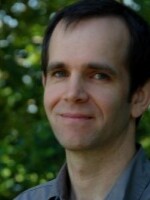Scientists know a little more about how big earthquakes happen, from research published Thursday in the journal Science.
The study from the U.S. Geological Survey looked at a number of subduction zones, but not the Cascadia Subduction Zone, off the Northwest coast. The research doesn't change predictions that there's a one-in-three chance of a big quake in the Northwest in the next 50 years.
The research focuses on the physical mechanics of what happens when that kind of fault has an earthquake. The study's author, Jeanne Hardebeck, said subduction zones build up pressure in a way that's different from what was previously thought.
And Hardebeck said she found that subduction zones have relatively weak frictional strength, which may help explain why their earthquakes last so long.
“It may even be easier for a weak fault to produce a large earthquake, because once an earthquake starts, there aren't as many strongly stuck patches of the fault that could stop the rupture,” Hardebeck said.
Hardebeck said the findings have more relevance to scientists than to the general public. But she's hoping the research can help build a reliable model for seismologists to predict future earthquakes.
Copyright 2020 EarthFix. To see more, visit .




